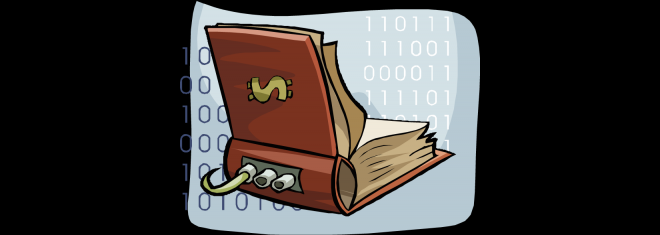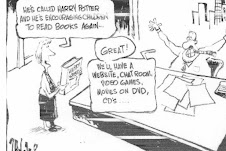
This is the photo I took of our display

 To follow up on my last post: “Is Teen reading on the decline?” I found some interesting information on a similar topic. In the same way that technology is changing how teens read, is technology also affecting the way they write?
To follow up on my last post: “Is Teen reading on the decline?” I found some interesting information on a similar topic. In the same way that technology is changing how teens read, is technology also affecting the way they write?

 school work.
school work.
 ting curricula and give them detailed feedback, motivates them to write. The report also pointed out that when teens write for an audience, such as blogging or social networking, it also serves as a motivation for them not only to write, but to write well. Ultimately, teens will continue to write for a variety of reasons—as part of a school assignment, to get a good grade, to stay in touch with friends, to share their artistic creations with others or simply to put their thoughts to paper, virtual or otherwise.
ting curricula and give them detailed feedback, motivates them to write. The report also pointed out that when teens write for an audience, such as blogging or social networking, it also serves as a motivation for them not only to write, but to write well. Ultimately, teens will continue to write for a variety of reasons—as part of a school assignment, to get a good grade, to stay in touch with friends, to share their artistic creations with others or simply to put their thoughts to paper, virtual or otherwise.
The Morton Grove Public Library is a lucky organization - they've got Director Ben Shapiro, and Teen/Reference Librarian Katy Opderbeck working for them, and they have their fingers on the pulse of the teen population. Shapiro and Opderbeck wrote a great article about getting teens to "get" the relevance of libraries to them, as well as bringing them physically into libraries. Shapiro tickled my funny bone when he said food would be a good lure. Before you panic, he's not recommending that we start a buffet line in the Manga section! What he meant was that teens like to browse the 'fridge and pick and choose from a large selection, so use that teen mentality of trying something at least once and get them interested. Check out the source article for more great ideas to bring in teens and keep them coming back!
Illustration by Max Scratchmann
Teens are multitaskers: Today's teens take multitasking to a whole new level, and can do homework, surf the internet, listen to music, play games, and interact on social media...just don't ask them to do chores!! In her article, Goldstein quotes a 2005 study by the Kaiser Family Foundation that says students between the ages of eight and 18 spend more than 25 percent of their media time multitasking. Libraries can capitalize on this by allowing internet access with headphones handy so that teens can listen to their music while doing homework and IMing friends. 
Teens prefer byte-sized entertainment - Because of their penchant for multitasking, keeping a teen's attention for one single thing is a herculean task! I think libraries are currently doing a good job of providing entertainment in short snippets by having teen areas that specialize in media attractive to teens.
Teens expect content on demand. With iPods, DVRs, YouTube, and the like, teens today are used to getting what they want when they want it. This entertainment on demand attitude has begun to drive the way people market to teens. According to Goldstein, "...the CW series Gossip Girl was initially a complete bust—at least, in terms of traditional TV ratings. But when network executives noticed the buzz on teen blogs and fan pages and the number of times the show was downloaded on iTunes, they realized they had a huge hit." What this tells us is that if libraries use social media, teens will listen!
Teens want to participate. Teens like social media because of the instant gratification, and it's easy to see that when you look at how many young people participate in things like American Idol. Teens want to share their opinions more than adults might even want, but libraries can use that by offering young people the opportunity to share their book reviews in podcasts and video blogs. Put a camera or microphone in a teen's face and they will go!
 I came across an article that read: It is believed that in the United States, teen reading is on the decline, especially among the young. With technology changing so fast and new gadgets evolving each day, I began to wonder what affect this had on Teens and reading. Were teens seeing reading as a chore? Were technological gadgets distracting teens from reading? Was teen reading really on the decline? I did some research and this is some of the information I found:
I came across an article that read: It is believed that in the United States, teen reading is on the decline, especially among the young. With technology changing so fast and new gadgets evolving each day, I began to wonder what affect this had on Teens and reading. Were teens seeing reading as a chore? Were technological gadgets distracting teens from reading? Was teen reading really on the decline? I did some research and this is some of the information I found:

 The next Teen Tech Week is scheduled for March 6-12, 2011. The theme will be Mix and Mash @ your library. Although their goal is the same, each library can choose which new technology they want to focus on each year. Everyone is encouraged to participate. Registration will begin in November of 2010.
The next Teen Tech Week is scheduled for March 6-12, 2011. The theme will be Mix and Mash @ your library. Although their goal is the same, each library can choose which new technology they want to focus on each year. Everyone is encouraged to participate. Registration will begin in November of 2010.As I was searching for my next article I found this one. It’s a how-to guide on getting teenagers volunteering in libraries. I thought it was very interesting because the author advises scheduling the volunteering around the teen’s schedules. Teenagers want to help and would love to help, but can’t always because of school or other things that are going on. It also advises on setting the times for when you need volunteers and wait to see who either signs up or who shows up. I thought that was a great idea as well.
More of the article refers to various activities the youth might enjoy. One of the activities I might have enjoyed (and probably still would) was on how to make a cat blanket, which could also double as a dog blanket. Another sessions gave really great directions on making bookmarks. The youth can use these to make items for donation. From what I can remember when I was a teenager I was always making key chains and necklaces using plastic string or leather string with beads. The author, Erminia M. Gallo, really sounds like she knows what she’s doing in getting the teens to participate with library activities.
"A Year in Volunteering at the Library" by Erminia M. Gallo, http://web.ebscohost.com.prozy.palomar.edu/ehost/pdfviewer/pdfviewer?vid=8&hid=112&sid=bdb94e6a-6651-4647-adf4-18e44fda6a44%40sessionmgr111


As Business 2.0 points out, a simple destination site won't cut it. My big beef with Friendster was always, "Well, what would I do there?" Visiting most social networking sites is akin to getting invited to a party where all the cool kids are going, then showing up and finding out there's no food, no drinks, no band, no games, no pool, nothing. Just a bunch of painful small talk and leering grins. The people-watching can hold your interest for only so long.
Yes, I know I can choose where to devote my time, but Orkut, Friendster, and even LinkedIn (which I do find more useful than the purely social sites) are interesting but less information rich than news sites, blogs, Google news, or any of the other sites I could visit on the Web. It's interesting, for example, to blog about the experiences I had on a given day, but its tedious to make sure my personal stats, favorite books, and current reading list are up-to-date. One of the reasons I think personal blogs win out over social networking is that they're inherently more personal, more inwardly focused, and a better chance to show more than a snapshot of yourself.
3. Traffic alone isn't enough
The reality of the new Web is that traffic alone just doesn't cut it. You can get all the visitors you want to your site, but you can't just blanket the thing with ads and hope to survive. Advertisers today are a more sophisticated bunch, and they're looking to send targeted, rich-content messages. That means that reliance on a generalized supply of banner ads is not a sustainable model, because no matter how much data you collect about your audience, if the audience isn't specific, the ads can't be, either. Witness MySpace's projected $20 million in ad sales. According to Business 2.0, it's working because MySpace attracts primarily what it refers to as "16- to 34-year-old hipsters." The Web is becoming an elitist sort of space. If social networking sites are a way to bring the masses together, advertisers are begging for a way to prune those masses into smaller, easier targets.
4. Strangers kind of suck (or, put nicely, the social hierarchy is really not that attractive)
Speaking of elitism, getting to know people is, frankly, a less attractive proposal than it first seems. Sure, business networking is valuable, and it's great to have a lot of resources who might know someone who can help you with ... something. But that argument gets a little thin when you're suddenly bombarded with date offers or all-too-frequent postings about the unsavory or just plain uninteresting habits of the strangers you suddenly know. Moreover, social networking sites pretty quickly and inevitably degenerate into cliques. That's normal, it happens on the blogosphere, and it's not really even that deplorable. It's just kind of tiresome on a daily basis. If you restrict your friends list to only the people you already know, well, then the boredom sets in. Why would you read their profiles over and over when you can just IM [instant message] them, e-mail them, or meet at the baseball game?
5. We already have the Internet
The only lasting argument about social networking that's ever made sense is that these networks are a valuable resource if you're adrift in the sea of online information. You can, in just a few hops, get to someone who knows someone or knows something that you need to know. That may be a valuable proposal in the business world, which gives a site like LinkedIn a better chance of survival than Friendster. But the argument's a little thin in a world where search is the king of the hill. If I need information online, I can find it. And I can probably find it faster using Google than I can by e-mailing one friend who'll e-mail another who'll e-mail another while my deadline slips away. Sure, it's helpful—once in a while. But once I have all these folks in my address book, I won't be much help in terms of ad impressions.
While this class extols all of the social networking tools, I thought it would be healthy to remember that many things on the wonderful web can be dangerous or just downright useless.









